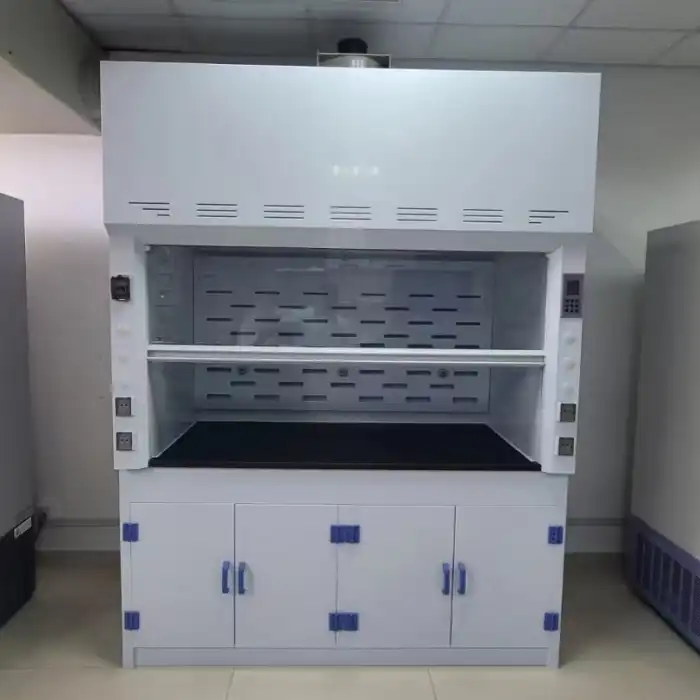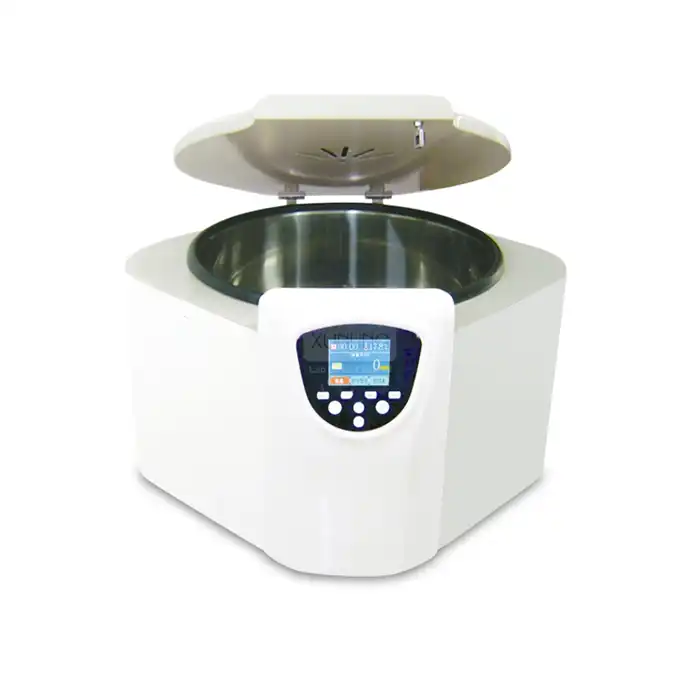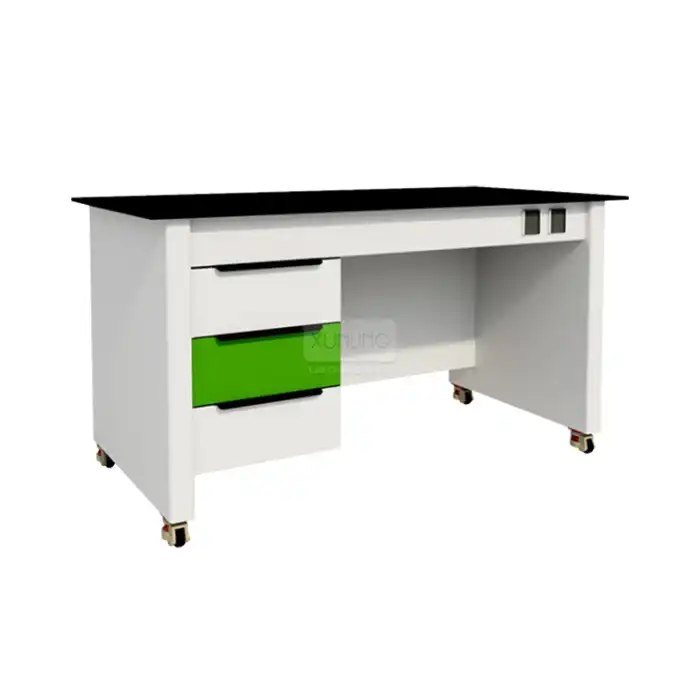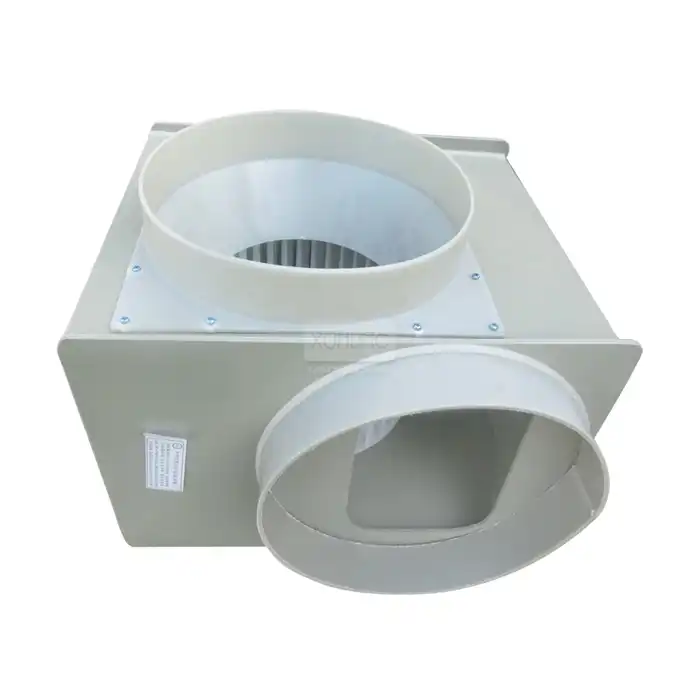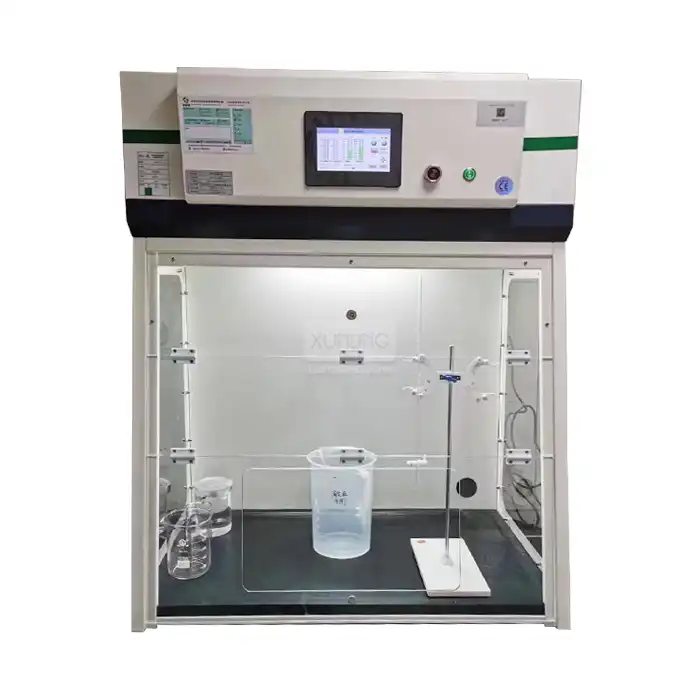
How do you maintain a benchtop fume hood?
2025-06-23 14:52:16
Maintaining a benchtop Fume Hood is essential to ensure its optimal performance, longevity, and most importantly, the safety of laboratory personnel. A benchtop fume hood, also known as a tabletop or desktop fume hood, serves as a critical piece of safety equipment in laboratories by providing local ventilation and protection against hazardous fumes, vapors, and particles. Proper maintenance not only extends the lifespan of this valuable equipment but also ensures it continues to provide the necessary protection against potentially harmful substances. Regular inspection, cleaning, and servicing of your benchtop fume hood are vital procedures that should be incorporated into your laboratory's standard operating protocols.
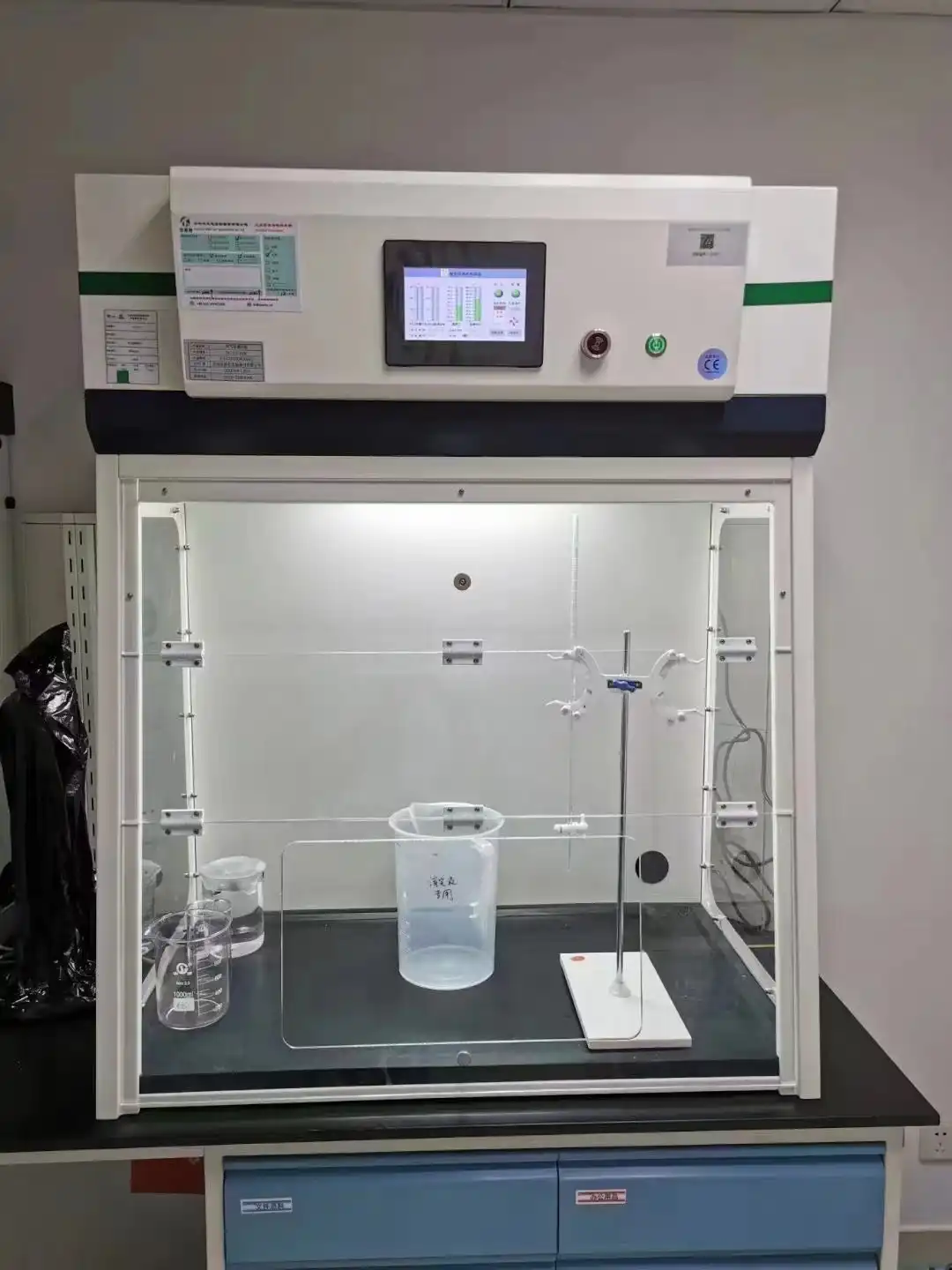
Essential Maintenance Procedures for Benchtop Fume Hoods
Regular Inspection Protocols
Regular inspection of your benchtop fume hood is the cornerstone of an effective maintenance program. These inspections should be conducted at least monthly, with more frequent checks if the hood is heavily used or handles particularly hazardous materials. Begin by examining the physical structure of the benchtop fume hood for any signs of damage, including cracks, chips, or warping in the hood body, which is typically made of 1.0mm full-thickness high-quality cold-roll steel sheet treated with phosphating and electrostatic powder sprayed with epoxy resin. This durable construction is designed to withstand laboratory conditions, but regular inspection ensures early detection of potential issues.
The sash mechanism requires special attention during inspection. The explosion-proof 5mm tempered glass and aluminum alloy sash handle, designed with a weight balance method in Xi'an Xunling's benchtop fume hoods, should move smoothly without resistance. Check the cables, pulleys, and counterweights if applicable, ensuring they're in good working condition. Any binding or unusual noises during operation warrant immediate attention, as a properly functioning sash is critical for maintaining appropriate airflow patterns and operator protection.
Additionally, inspect the airflow indicator and control systems, including the intelligent controller with digital display that manages power, fan, lighting, socket, sterilization, and damper functions. Verify that all displays are functioning correctly and that the airflow rate meets the manufacturer's specifications. The face velocity should typically be between 80-120 fpm (feet per minute), but consult your specific model's documentation for exact requirements. This regular inspection regimen helps identify potential issues before they compromise the safety and effectiveness of your benchtop fume hood.
Cleaning and Decontamination Techniques
Effective cleaning and decontamination of your benchtop fume hood are crucial for maintaining both performance and safety. Start by developing a cleaning schedule based on usage frequency, with more frequent cleaning for hoods handling particularly hazardous or sticky substances. Before cleaning, always ensure the benchtop fume hood is running to prevent the escape of contaminants, and wear appropriate personal protective equipment including gloves, lab coat, and eye protection.
Begin the cleaning process by removing all equipment and materials from the benchtop fume hood work surface. Clean the 5mm compact grade laminate liner and baffle (which are fixed with PP material in Xi'an Xunling's models) using appropriate cleaning agents based on the contaminants present. For general cleaning, a mild detergent solution works well, but specific solvents may be required for particular chemicals—always consult chemical compatibility charts to avoid damaging the hood materials. Pay special attention to the baffle system, which is engineered with a three-section design for proper air distribution and constant face velocity in quality benchtop fume hoods.
The work surface, side panels (which are removable in Xi'an Xunling models for easy access to plumbing and electrical wiring), and the exterior surfaces should be thoroughly wiped down to remove any chemical residues or dust. The glass sash requires special attention—clean it with appropriate glass cleaners that won't leave streaks or residues that could impair visibility. After cleaning, allow all surfaces to dry completely before restarting experiments. For hoods that have handled particularly hazardous materials, a more rigorous decontamination protocol may be necessary, potentially involving specialized disinfectants or neutralizing agents. Proper cleaning not only maintains the aesthetic appearance of your benchtop fume hood but also prevents cross-contamination between experiments and ensures optimal airflow performance.
Airflow Verification and Adjustment
Airflow verification is perhaps the most critical aspect of benchtop fume hood maintenance, as it directly impacts the equipment's ability to protect users from hazardous substances. Face velocity testing should be conducted at least annually, though many facilities opt for quarterly checks. This testing measures the speed of air moving through the front opening of the benchtop fume hood, which should typically fall within 80-120 feet per minute (fpm) depending on the specific application and institutional requirements.
To perform airflow verification, you'll need a calibrated anemometer or velometer. Divide the sash opening into a grid of equal sections (typically nine points) and measure the velocity at each point, then calculate the average. For Xi'an Xunling's benchtop fume hoods, which feature a by-pass airflow design with variable air volume compatibility, proper airflow adjustment is simplified by the hood entrance framed with inward-angled members that minimize turbulence and provide smooth air movement. If the average face velocity falls outside the acceptable range, adjustments to the exhaust system may be necessary.
The baffle system—a crucial component in benchtop fume hoods—may also require adjustment to optimize airflow patterns. Xi'an Xunling's models feature an engineered three-section baffle system specifically designed for proper air distribution and constant face velocity. If airflow is uneven across the face opening, adjusting the baffle openings can help redistribute air more effectively. Additionally, check the function of the exhaust blower, which in many models is available as an optional accessory. Proper maintenance of these components ensures that your benchtop fume hood continues to provide the protection necessary for laboratory operations, particularly when handling chemicals or biological agents in educational settings, research institutions, or individual workstations.
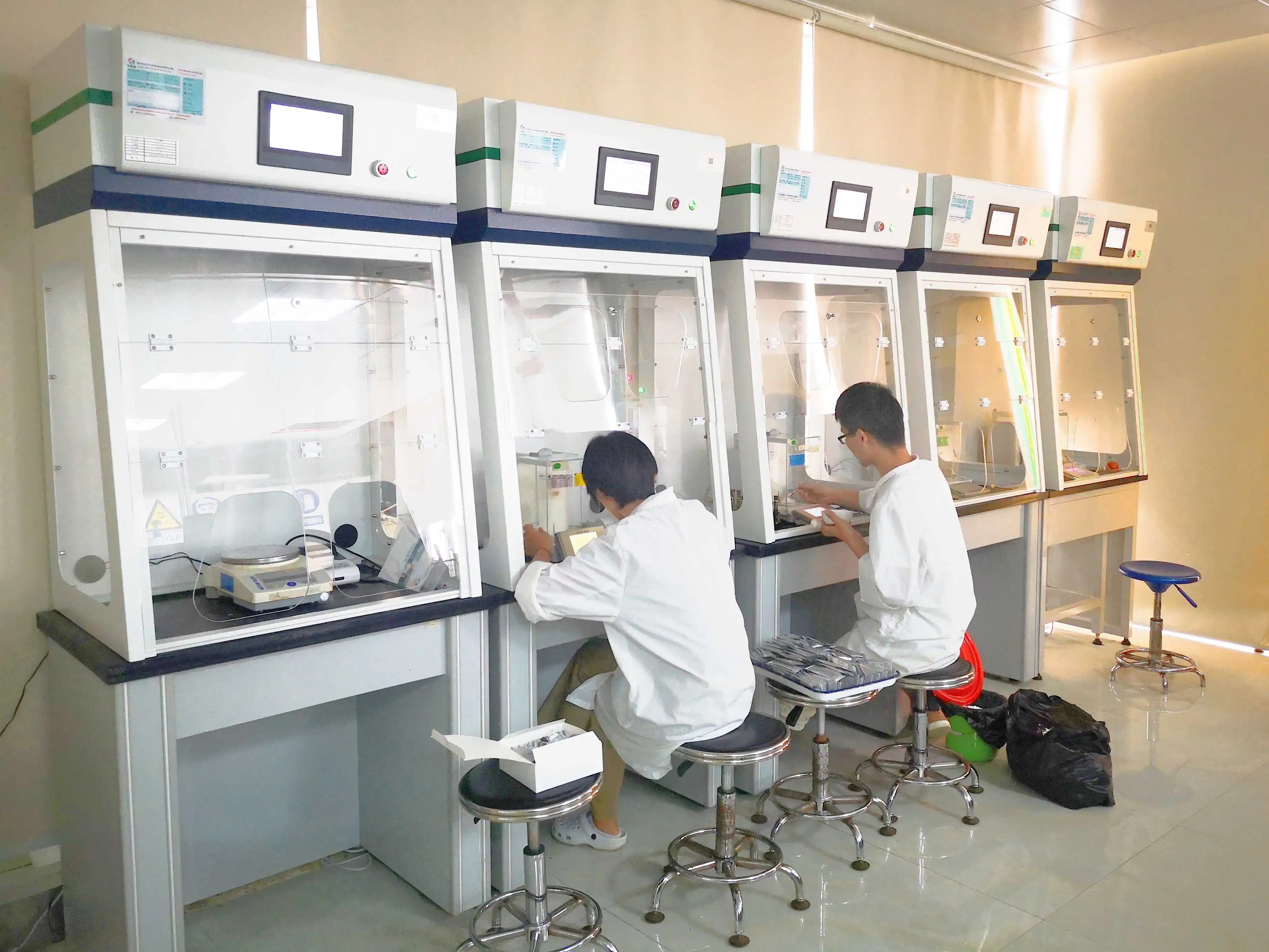
Troubleshooting Common Benchtop Fume Hood Issues
Addressing Airflow Problems
Airflow problems in benchtop fume hoods can compromise user safety and experimental integrity. One common issue is insufficient face velocity, which can allow hazardous vapors to escape into the laboratory environment. This problem may result from several factors, including exhaust fan malfunction, blocked ductwork, or improperly adjusted baffles. For benchtop fume hoods equipped with the 250 or 315mmφ PP hood standard in Xi'an Xunling models, checking the connection to the exhaust system is essential when troubleshooting airflow issues.
Begin addressing airflow problems by verifying the operation of the exhaust blower (an optional accessory in many benchtop fume hood configurations). Listen for unusual noises that might indicate bearing failure or motor problems, and check the electrical connections to ensure proper power supply. If the blower seems operational but airflow remains inadequate, inspect the ductwork for blockages or damage. In installations utilizing Xi'an Xunling's optional ductwork accessories, ensure all connections are secure and that the duct path doesn't contain sharp bends or restrictions that could impede proper flow.
Another critical area to examine is the baffle system. Xi'an Xunling's benchtop fume hoods feature an engineered three-section baffle system designed for proper air distribution and constant face velocity. If these baffles become misaligned or blocked with debris, airflow patterns can be disrupted. Remove the baffles (they're designed to be removable for easy cleaning in quality models) and check for any obstructions, then reinstall them according to the manufacturer's specifications. For more complex airflow problems, it may be necessary to consult with a ventilation specialist or contact Xi'an Xunling's comprehensive after-sales service team, which offers installation, training, and maintenance support to ensure your laboratory equipment continues to function optimally in settings ranging from school laboratories to research institutions.
Electrical and Lighting Maintenance
Electrical components and lighting systems in benchtop fume hoods require regular maintenance to ensure safe and effective operation. The electrical system in modern benchtop fume hoods, such as those manufactured by Xi'an Xunling, typically includes multiple components: the intelligent controller with digital display managing power, fan, lighting, socket, sterilization, and damper functions; the junction box with circuit board and AC contactor suitable for 110V-230V voltage; and the standard four electrical outlets provided for laboratory equipment.
Begin electrical maintenance by inspecting all visible wiring for signs of wear, damage, or exposure to corrosive chemicals. The double wall construction of quality benchtop fume hoods allows for concealed routing of piping and wiring, but access points should be checked periodically. Test all electrical outlets to ensure they're functioning correctly and verify that ground fault circuit interrupters (GFCIs) trip properly when tested. The junction box should be inspected for any signs of overheating, such as discoloration or burnt odors, which could indicate potential electrical problems.
Lighting maintenance is equally important, as proper illumination of the work area is essential for safe laboratory procedures. Xi'an Xunling's benchtop fume hoods feature 30W LED purification lamps providing luminosity greater than 300LUX, which should be tested regularly to ensure they meet this specification. If illumination seems diminished, first try cleaning the light fixtures, as chemical vapors and dust can accumulate on surfaces and reduce light output. Check for flickering, which may indicate failing ballasts or LED drivers. When replacement is necessary, ensure new components match the original specifications, including explosion-proof ratings if applicable (available as an optional accessory in Xi'an Xunling models). Proper maintenance of electrical systems and lighting not only ensures the functionality of your benchtop fume hood but also prevents potential electrical hazards in the laboratory environment.
Sash and Mechanical Component Care
The sash system of a benchtop fume hood is a critical mechanical component that directly impacts both safety and functionality. In Xi'an Xunling's models, the 5mm tempered explosion-proof glass sash with aluminum alloy handle is designed with a weight balance method for smooth operation. Regular maintenance of this system is essential to prevent binding, ensure proper positioning, and maintain the protective barrier between laboratory personnel and potentially hazardous materials.
Begin sash maintenance by cleaning the glass thoroughly using appropriate non-abrasive glass cleaners that won't leave streaks or residues. Inspect the glass for any chips, cracks, or other damage that could compromise its integrity—even minor damage can potentially lead to catastrophic failure when the sash is subjected to thermal or chemical stress. Next, examine the sash track and guide systems for debris or buildup that might impede smooth movement. Clean these tracks with a dry cloth or soft brush, followed by a light application of an appropriate lubricant if recommended by the manufacturer.
For benchtop fume hoods with counterweighted sash systems, inspect the cables, chains, or pulley mechanisms for signs of wear or fraying. Check that counterweights are properly secured and that the balance is correctly adjusted—when released from any position, the sash should remain stationary rather than sliding up or down. If your benchtop fume hood features horizontal sliding sashes, ensure the panels move freely in their tracks and that seals between panels are intact to prevent leakage.
Other mechanical components requiring regular attention include the optional remote-controlled fixture gas and water faucets available with Xi'an Xunling's benchtop fume hoods. These should be checked for leaks, proper operation, and ease of control. The optional PP oval cupsink should be inspected for drainage issues and cleaned regularly to prevent blockages. The distillation grid kit, another optional accessory, should be examined for stability and structural integrity. Regular maintenance of these mechanical components ensures that your benchtop fume hood remains a reliable and safe piece of laboratory equipment, particularly important in educational settings, research institutions, or individual workstations where consistent performance is essential.
Professional Maintenance and Certification Requirements
Annual Certification Process
The annual certification process for benchtop fume hoods is a comprehensive evaluation that ensures the equipment continues to meet safety standards and performance specifications. This process is not merely a recommendation but often a requirement for laboratories seeking to maintain compliance with regulatory agencies and institutional safety protocols. The certification typically involves a series of standardized tests performed by qualified professionals with specialized equipment.
Face velocity testing forms the cornerstone of the certification process. Using calibrated instruments, technicians measure airflow at multiple points across the sash opening to verify that the benchtop fume hood maintains proper face velocity (typically 80-120 fpm) throughout the work area. For Xi'an Xunling's benchtop fume hoods, which feature a by-pass airflow design with variable air volume compatibility, this testing confirms that the engineered three-section baffle system is providing proper air distribution and constant face velocity as designed.
Containment testing, often using smoke visualization or tracer gas methods, evaluates the hood's ability to contain and exhaust airborne contaminants. This critical test verifies that the hood entrance, framed with inward-angled members to minimize turbulence and provide smooth air movement, is effectively preventing the escape of potentially hazardous substances. Additional tests may include cross-drafts evaluation, which assesses how external air currents affect hood performance, and noise level measurements to ensure the exhaust system operates within acceptable ranges.
The certification process also includes a thorough inspection of all components, from the 1.0mm full-thickness high-quality cold-roll steel sheet body to the explosion-proof 5mm tempered glass sash and the 5mm compact grade laminate liner and baffle. The intelligent controller with digital display is tested to confirm proper management of power, fan, lighting, socket, sterilization, and damper functions. Upon successful completion, the certified technician provides documentation detailing the tests performed and results obtained, often including a certification label affixed to the benchtop fume hood itself, indicating the date of certification and when recertification is due.
When to Call Professional Maintenance
While routine maintenance can be performed by laboratory personnel, certain situations call for professional intervention from qualified technicians or representatives from the manufacturer, such as Xi'an Xunling Electronic Technology Co., Ltd. Understanding when to call for professional maintenance can prevent minor issues from developing into major problems that compromise safety or require costly repairs.
Significant changes in airflow performance represent one of the most common reasons to seek professional help. If face velocity measurements consistently fall outside the acceptable range despite baffle adjustments, or if smoke tests reveal containment failures, these indicate potential problems with the exhaust system that require expert diagnosis. Similarly, unusual noises emanating from the benchtop fume hood, particularly from the blower motor or exhaust system, suggest mechanical issues that should be addressed by qualified technicians familiar with the specific design features of models like those offered by Xi'an Xunling, which include options for 12008501500 mm, 15008501500 mm, and 18008501500 mm configurations or even customized sizes.
Electrical problems present another scenario requiring professional intervention. Issues with the intelligent controller, lighting system, or electrical outlets should be addressed by technicians with appropriate electrical qualifications. This is particularly important for the LED 30W purification lamp systems and junction boxes with circuit boards and AC contactors designed for 110V-230V voltage ranges, as improper repairs could create safety hazards or damage sensitive electronic components.
Physical damage to the benchtop fume hood structure, including the hood body made of 1.0mm full-thickness high-quality cold-roll steel sheet or the 5mm compact grade laminate liner and baffle, may compromise containment capabilities and should be evaluated by professionals. Additionally, modifications to the exhaust system, installation of new accessories like PP oval cupsinks or remote-controlled fixture gas and water faucets, or relocation of the benchtop fume hood should be performed by qualified personnel to ensure proper function and compliance with safety standards.
Documentation and Compliance Records
Maintaining comprehensive documentation and compliance records for your benchtop fume hood is not merely an administrative task but a critical component of laboratory safety management and regulatory compliance. Proper record-keeping provides evidence of due diligence in equipment maintenance, helps track performance trends, facilitates troubleshooting, and may be required during laboratory inspections or audits by regulatory agencies.
Begin by establishing a dedicated maintenance log for each benchtop fume hood in your facility. This log should include the model information (such as the specific size configuration among Xi'an Xunling's offerings of 12008501500 mm, 15008501500 mm, or 18008501500 mm), serial number, installation date, and location. Record all routine maintenance activities, including dates of inspection, cleaning procedures performed, airflow measurements taken, and any adjustments made to components like the engineered three-section baffle system or the intelligent controller with digital display that manages power, fan, lighting, socket, sterilization, and damper functions.
Certification reports from annual or semi-annual professional evaluations should be filed alongside the maintenance log. These reports typically include detailed information about face velocity measurements, containment test results, and the operational status of all components from the explosion-proof 5mm tempered glass sash to the LED 30W purification lamp providing luminosity greater than 300LUX. Any repair documentation, including work orders, parts replacement records, and post-repair verification testing, should also be retained to establish a comprehensive service history.
For laboratories operating under specific regulatory frameworks, such as those handling particularly hazardous substances, additional documentation may be required. This might include training records demonstrating that personnel are qualified to operate the benchtop fume hood safely, standard operating procedures (SOPs) for specific processes conducted within the hood, and risk assessments for activities involving hazardous materials. Organizations should also maintain copies of relevant standards and guidelines, such as those from ANSI/ASHRAE, NFPA, or OSHA, to ensure compliance with current requirements. Proper documentation not only demonstrates compliance with regulatory standards but also reflects Xi'an Xunling's commitment to providing laboratory equipment that meets international standards, including ISO, CE, and NFPA certifications, ensuring that their products not only meet but exceed industry expectations.
Conclusion
Proper maintenance of benchtop fume hoods is essential for ensuring laboratory safety, equipment longevity, and operational efficiency. By implementing regular inspection routines, thorough cleaning protocols, airflow verification, and timely professional servicing, laboratories can maximize the performance and protective capabilities of these crucial safety devices. Remember that consistent documentation not only supports compliance requirements but also helps track the equipment's performance history and anticipate maintenance needs.
Are you looking for a reliable benchtop fume hood that combines cutting-edge technology with outstanding durability? At Xi'an Xunling Electronic Technology Co., Ltd., we pride ourselves on offering cost-effective solutions with unmatched quality. Our benchtop fume hoods are designed for reliability, ease of use, and come with comprehensive 5-year warranty coverage. Experience the difference that professional laboratory equipment can make in your facility with our custom-made, one-stop service solutions. Contact our expert team today to discuss your specific laboratory requirements and discover how we can help make your laboratory world cleaner, safer, and healthier! Email us at xalabfurniture@163.com to get started.
References
1. Johnson, A. R., & Smith, P. T. (2023). Laboratory Safety Equipment: Maintenance and Operation Guidelines. Journal of Laboratory Safety, 45(3), 78-92.
2. Martinez, C., & Wilson, R. (2022). Benchtop Fume Hood Performance Standards and Testing Procedures. American Laboratory Association Publications, 5th Edition.
3. Chen, L., & Wang, H. (2023). Optimizing Laboratory Ventilation Systems: A Comprehensive Guide to Fume Hood Maintenance. International Journal of Laboratory Design, 18(2), 112-126.
4. Thompson, E. J. (2024). Safety Compliance in Academic Research Laboratories: Equipment Certification Requirements. Academic Laboratory Safety Quarterly, 12(1), 34-48.
5. Roberts, S. D., & Garcia, M. (2022). Modern Laboratory Design: Integrating Benchtop Fume Hoods for Space Efficiency and Safety. Laboratory Architecture and Engineering Journal, 29(4), 215-230.
6. Peterson, K. L., & Kumar, V. (2023). Preventative Maintenance Protocols for Laboratory Ventilation Systems. Chemical Laboratory Safety Guide, 7th Edition, American Chemical Society Press.
YOU MAY LIKE








